Introduction to Lunges Exercise
Lunges are a quintessential lower-body exercise, revered by fitness enthusiasts and professionals alike. Engaging multiple muscle groups simultaneously, they are not only functional but also incredibly versatile. Whether you’re looking to enhance your athletic performance, sculpt your legs, or merely infuse a bit of variety into your routine, lunges are a go-to choice.
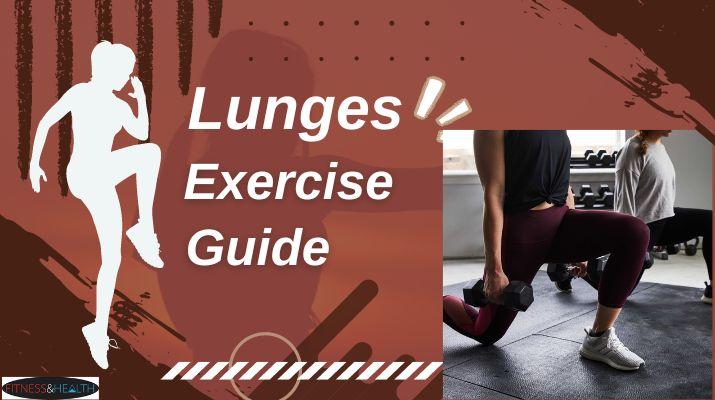
Definition and Basics of Lunges Exercise:
A lunge is a single-leg body-weight exercise that requires one leg to step forward, backward, or to the side, and then return to the starting position. It predominantly targets the quadriceps, hamstrings, glutes, and calves. The core is also engaged to stabilise the body throughout the movement.
A basic lunge is executed by:
- Standing tall with feet hip-width apart.
- Taking a step forward with one leg and lowering your hips until both knees are bent at a 90-degree angle.
- Ensuring the front knee is directly above the ankle, and the other knee doesn’t touch the ground.
- Keeping the weight in the heels, push back to the starting position.
- Repeat on the other side.
Benefits of Lunges Exercise
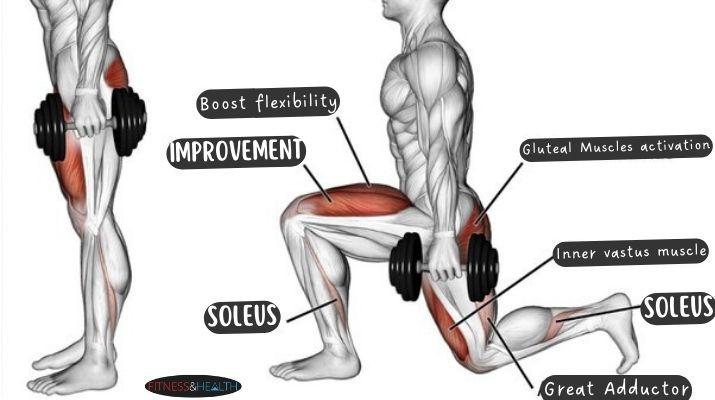
Strength and Muscle Building:
Lunges are a compound movement, meaning they engage multiple joints and muscle groups at once. This makes them highly effective for building strength and muscle mass in the lower body. When performed consistently and with added resistance, they can lead to significant muscle definition, especially in the quadriceps and glutes. To understand more about muscle engagement, check out our detailed guide on lat workouts.
Flexibility and Balance:
As a unilateral exercise, lunges not only build strength but also enhance flexibility and balance. Each lunge requires stability from the core and coordination from the lower body, improving overall body proprioception. The dynamic range of motion involved also promotes flexibility in the hip flexors.
Calories Burned during Lunges:
Lunges, particularly when incorporated into high-intensity routines or HIIT workouts, can burn a substantial number of calories. The exact number varies depending on an individual’s weight, metabolism, and intensity of the workout. However, one can expect to burn between 7-10 calories per minute during a typical lunging sequence
Anatomy of a Lunge: Muscles Worked
When you’re mastering the art of the lunge, it’s not just about the movement. It’s about understanding the machinery behind that movement—your muscles. Knowing which muscles are engaged during different lunge variations not only enhances your workout but also helps in preventing injuries and ensuring balanced muscle development.
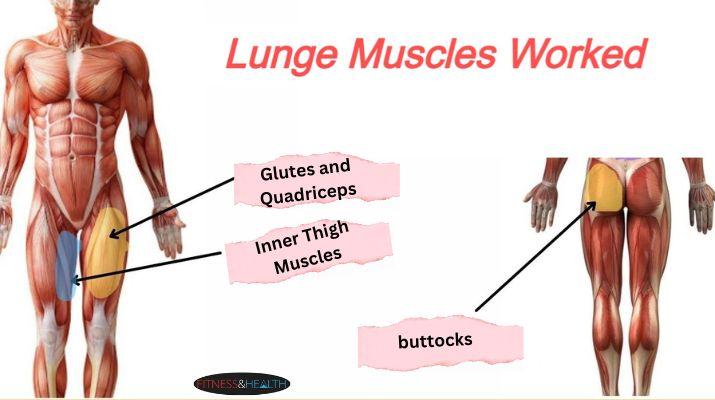
Side Lunges Muscles Worked:
The side lunge, also known as the lateral lunge, is a unique variation that shifts the focus a bit from the standard forward or reverse lunge. When you execute a side lunge:
- Adductors (Inner Thigh Muscles): These are the primary muscles worked in side lunges. As you step out to the side, the adductors stretch, and as you push back to the starting position, they contract.
- Glutes and Quadriceps: While they are secondary muscles engaged in this movement, they still play a vital role. The glutes stabilise the hips, and the quadriceps assist in controlling the descent and pushing back up.
- Hamstrings and Calves: Though not the primary focus, these muscles assist in the control and stabilisation of the movement.
For a deeper understanding of muscle engagement and variation, our guide on Bulgarian squat glute exercises offers valuable insights.
Overall Muscle Activation during Various Lunge Variations:
Lunges, in their many forms, target a variety of muscles:
- Quadriceps: Engaged in almost every lunge variation, they help in the extension of the knee.
- Hamstrings: Located at the back of your thigh, they aid in hip extension and knee flexion.
- Glutes: The powerhouse of the hips, glutes are engaged especially when pushing off and returning to the starting position.
- Calves (Gastrocnemius and Soleus): These are worked during the push-off phase of the lunge, helping to stabilize the movement.
- Core (Rectus Abdominis, Obliques, and Erector Spinae): Though not directly targeted, the core muscles stabilize the torso, making sure you maintain an upright position during the lunge.
Different lunge variations will emphasise different muscles. For example, a forward lunge primarily activates the quadriceps, while a reverse lunge shifts more focus to the glutes and hamstrings. Elevated or deficit lunges intensify the range of motion, bringing deeper muscle fiber activation, especially in the glutes and hamstrings.
Core Variations of Lunges
The beauty of lunges lies in their adaptability and versatility. While the foundational technique remains consistent, slight modifications can lead to different lunge variations, each targeting unique muscle groups and offering varied benefits. Let’s explore the foundational version – the stationary lunge.
Stationary Lunges:
The stationary lunge, often the first type of lunge one learns, serves as the building block for all other lunge variations. It offers a controlled environment to understand the mechanics of the movement, making it an excellent choice for beginners or for those looking to perfect their form.
Basics and How-to:
- Position: Begin by standing upright, feet together, and hands on your hips or holding dumbbells by your side for added resistance.
- Step and Lower: Take a step forward with your right leg, keeping the left leg rooted in place. Begin to lower your body until both knees are bent at a 90-degree angle. The rear knee should remain slightly above the ground. Ensure your front knee stays directly above the ankle.
Rise and Return: Pushing through the heel of your front foot, rise back to the starting position. Complete your set on one leg before switching to the other.
Sets and Reps Recommendation:
For beginners, it’s advisable to start with body-weight stationary lunges to get a feel for the movement:
Perform 2 to 3 sets of 10 to 12 repetitions for each leg.
For those who are more advanced or are incorporating weights:
Perform 3-4 sets with 12-15 repetitions for each leg.
Always prioritise form over the number of repetitions. If you find yourself straining or if your form begins to waver, it might be beneficial to reduce the number of reps or sets until you gain more strength and proficiency in the movement. For a deeper dive into sets and reps, and how they can be structured for different exercises, our guide on sumo deadlifts offers valuable insights.
Lateral Lunges:

Differing from the forward and reverse versions, the lateral lunge targets the inner and outer thighs more effectively. From a standing position, step out to the side and bend the stepping leg at the knee, keeping the other leg straight. Push off the bent leg to return to the start position.
Lateral Lunge Dumbbell Variation:
Enhance the intensity by holding a dumbbell in each hand by your side or a single dumbbell goblet style at chest level. As you step into the lateral lunge, let the weights descend naturally with your motion. This addition increases resistance and works the upper body slightly.
Bulgarian Lunges:
Also known as Bulgarian split squats, this variation requires one foot to be elevated on a bench or platform behind you. It intensifies the workout for the front leg, particularly the quads and glutes. For an in-depth guide, refer to our Bulgarian squat glute exercises post.
Jump Lunges:
Add a cardiovascular element with this explosive variation. Start in a standard lunge position, but instead of returning to standing, jump and switch legs in mid-air, landing into a lunge with the opposite leg forward. This plyometric move increases heart rate and builds explosive power.
Side Lunges:
Essentially the same as lateral lunges, side lunges have you stepping to the side and pushing your hips back as you bend the stepping leg at the knee.
Side Lunges with Weights:
Incorporate dumbbells or kettlebells held at your sides or in a goblet position at chest level. This not only enhances resistance but also engages the core more for stabilisation.
Static Lunges:
A term often used interchangeably with stationary lunges. It involves keeping both feet in the same position throughout the set, emphasising controlled movement.
Elevated Lunges:
By elevating either the front or rear foot on a platform or step, the range of motion increases. This variation puts more emphasis on the working leg and intensifies the stretch in the hip flexors of the elevated leg.
Deficit Lunges:
Performed by standing on a raised platform, it allows for a deeper lunge, enhancing the stretch and work in the glutes and hamstrings.
Kettlebell Lunges:
Instead of dumbbells, use a kettlebell either held in a goblet position or in a suitcase carry (one kettlebell in each hand by your sides). The unique shape of kettlebells can alter the centre of gravity, providing a different kind of challenge for the core and stabiliser muscles.
Advanced Lunges Variations
Lunges, by nature, are a versatile exercise that can be enhanced and varied to fit the needs of both beginners and advanced trainees. As you progress in strength and stability, adding weights and leveraging gym equipment can elevate the intensity of the lunge, offering more resistance and challenging the muscles in new ways.
Lunges with Weights:
Incorporating weights into your lunge workouts can significantly boost muscle activation, leading to greater strength gains and muscle definition.
Dumbbell Lunges:
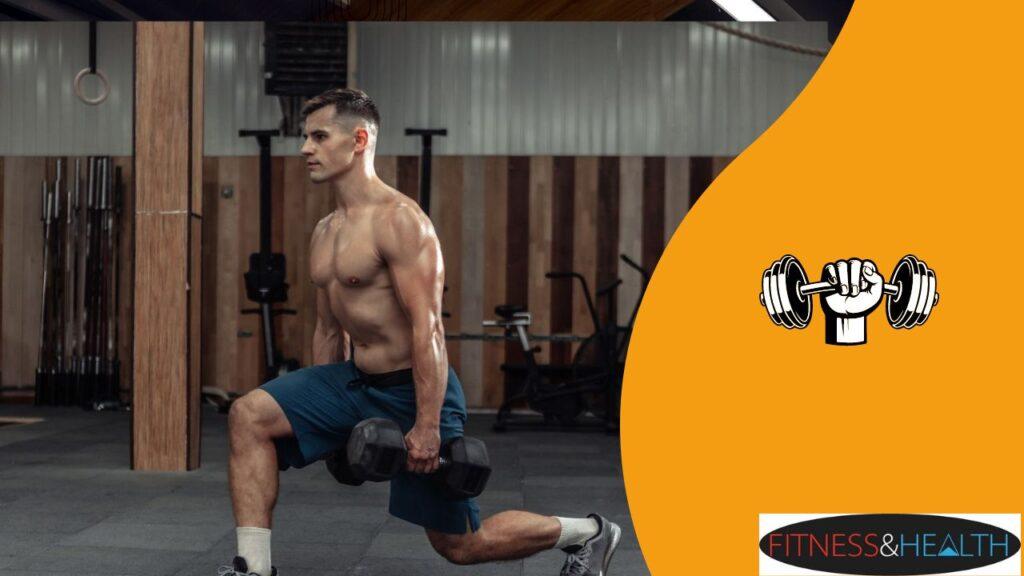
- How-to: Hold a dumbbell in each hand by your sides, maintaining a firm grip. As you step into your lunge, ensure your spine remains neutral and your core engaged to counterbalance the added weight.
- Benefits: This variation targets the entire lower body while also engaging the forearms and challenging the core for stabilisation.
Barbell Lunges:
- How-to: Place a barbell across the upper back, gripping it wider than shoulder-width. Keep your chest lifted and core tight as you perform the lunge, ensuring the bar stays stable.
- Benefits: The barbell adds more weight and requires heightened stabilisation, particularly in the upper back and core.
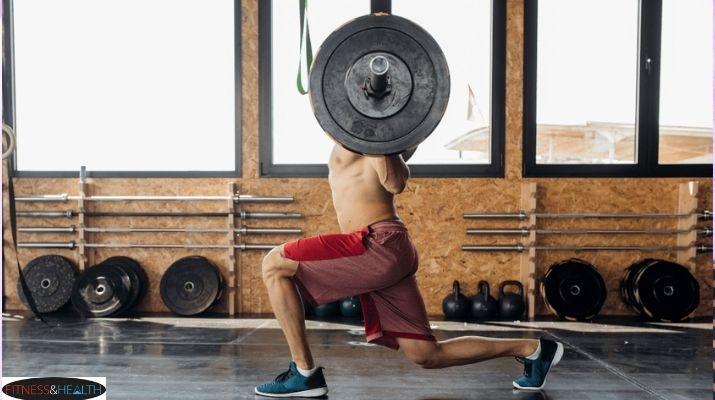
Kettlebell Lunges:
- How-to: You can perform these by holding a kettlebell in a goblet hold (close to the chest) or by holding one in each hand by your sides.
- Benefits: Kettlebells offer a unique centre of gravity, demanding more from the core muscles. The goblet hold also introduces an element of upper body engagement, especially the shoulders and biceps.
Smith Machine Lunges:
The Smith Machine, with its guided vertical path, provides added safety and stability, making it ideal for those who want to integrate more weight into their lunge workouts without the instability of free weights.
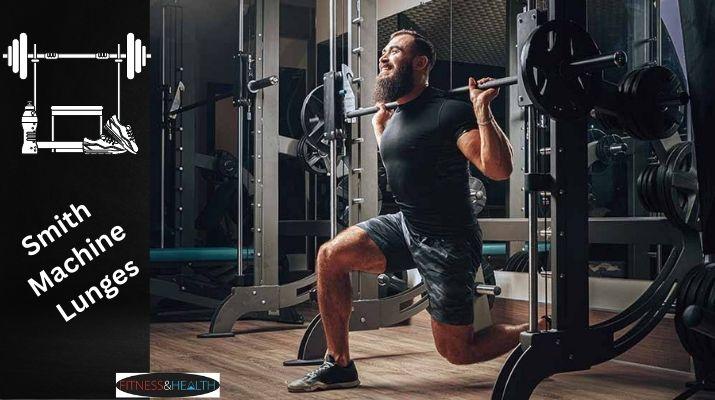
- How-to: With the bar positioned at chest height, stand facing away from the machine. Duck under the bar so it rests on your shoulders. Disengage the bar and step forward into a lunge, pushing back to the starting position before racking the bar.
- Benefits: The Smith Machine allows for controlled movements and heavier weights, ensuring the muscles are under tension for longer periods. This can lead to improved muscle endurance and growth.
Common Mistakes While Performing Lunges
Executing lunges with proper form is essential for preventing injuries and reaping maximum benefits. Here are some prevalent mistakes made during lunges and how to rectify them:
Foot Positioning:
- Mistake: Placing the foot too close or too far can lead to instability and strain on the knees.
- Correction: Ensure that when you lunge forward, your front shin remains vertical and the back knee hovers just above the ground.

Torso Alignment:
- Mistake: Leaning too far forward or backward can put undue pressure on the spine and hinder the engagement of core muscles.
- Correction: Maintain an upright posture with the chest lifted and shoulders relaxed. Activate your core muscles to provide support to your spine.
Knee Position Over the Toe:
- Mistake: Allowing the front knee to travel too far past the toes can cause unnecessary stress on the knee joint.
- Correction: Ensure your front knee is aligned with your ankle. Think of moving vertically downward rather than pushing forward.
Safety Measures and Precautions
To prevent injuries and make the most out of your lunge exercises, here are some essential safety measures:
Proper Warm-up and Stretching:
- Importance: Jumping straight into intense exercises can strain cold muscles and increase injury risk.
- Recommendation: Begin with a 5-10 minute warm-up of light cardio, like walking or jogging, followed by dynamic stretches targeting the legs and hips.
Understanding One’s Limitations:
- Importance: Pushing beyond one’s capacity can lead to strains or more severe injuries.
- Recommendation: Always listen to your body. Start with a manageable weight and increase gradually. If you feel sudden sharp pain or discomfort, cease immediately.
Ensuring Proper Footwear and Surface:
- Importance: The wrong shoes or an uneven surface can cause imbalance, leading to potential injuries.
- Recommendation: Wear supportive athletic shoes that provide good grip. Perform lunges on a flat, non-slippery surface. For more details on this, our post on lat workouts touches upon the importance of proper foundation and stability during exercises
Incorporating lunges into your workout can yield tremendous benefits, but as with all exercises, proper form and precautions are crucial. Being vigilant about these aspects will ensure that you remain injury-free and continue to progress in your fitness journey.
Guide to Sets, Reps, and Intensity
The number of sets and reps, coupled with the intensity, is critical in determining the outcome of any exercise. Depending on your experience and fitness level, these recommendations may vary:
Beginner Recommendations:
- Sets: 2-3
- Reps: 8-12 per leg
- Intensity: Focus on bodyweight lunges or with light weights to nail down the form.
Intermediate Recommendations:
- Sets: 3-4
- Reps: 12-15 per leg
- Intensity: Start integrating more weights or challenging variations like jump lunges.
Advanced Recommendations:
- Sets: 4-5
- Reps: 15-20 per leg, or even more if using lighter weights.
- Intensity: Incorporate advanced variations with heavier weights, like barbell lunges or lunges on the Smith machine.
Remember, quality always trumps quantity. Focus on maintaining good form throughout, irrespective of your fitness level.
Calories Burned with Lunges Exercise
The number of calories burned during lunges or any other exercise depends on various factors, including the intensity, duration, and one’s weight and metabolism.
Factors Influencing Calorie Burn:
- Body Weight: Typically, a heavier person will burn more calories doing the same activity as a lighter person.
- Duration: The longer you perform lunges, the more calories you will burn.
- Intensity: More vigorous or weighted lunges can burn more calories than basic lunges.
Comparisons with Other Exercises:
- Lunges: An average person weighing around 155 pounds might burn approximately 50-60 calories during 10 minutes of lunges.
- Sumo Deadlifts: Comparatively, sumo deadlifts are more intensive and can burn more calories in less time. For more insights, our sumo deadlift guide provides detailed information.
- HIIT Workouts: High-Intensity Interval Training can lead to a much higher calorie burn in a shorter duration. For a comprehensive look at HIIT workouts, you might want to check out our post on HIIT workouts.
It’s essential to note that the actual number of calories burned can vary from person to person and the numbers above are estimates. The key is to remain consistent in your workout routine and couple it with a balanced diet to see sustained results.
Conclusion: Incorporating Lunges into Your Fitness Routine
Lunges have stood the test of time as one of the most versatile and effective lower body exercises. They not only sculpt and strengthen the thighs, glutes, and calves but also improve balance, flexibility, and overall functional fitness. With the myriad variations available, lunges can be adapted to suit everyone, from the novice embarking on their fitness journey to the seasoned athlete looking to diversify their regimen.
The benefits of lunges are evident, but what’s equally crucial is the commitment to performing them with proper form and understanding. As highlighted throughout this guide, ensure that you’re aware of the common mistakes and take the necessary precautions. This not only helps in reaping maximum benefits but also safeguards against potential injuries.
Interlinking lunges with other exercises can also boost your overall fitness results. For instance, after mastering lunges, you might want to explore exercises like the Bulgarian squat to further challenge your glutes and legs. The beauty of fitness lies in its adaptability and evolution, and lunges exemplify this versatility. To sum up, if lunges aren’t already a staple in your workout routine, it’s high time they were. With consistent effort, correct technique, and a splash of variety, you’re on the path to more robust, more toned legs and a fitter version of yourself. So, the next time you’re in the gym or even in the comfort of your home, take that step forward (or sideways!) and lunge your way to better health.
Frequently Asked Questions (FAQs)
What are lunges exercises good for?
Lunges are a dynamic lower body exercise that target multiple muscle groups, including the quadriceps, hamstrings, glutes, and calves. They help in strengthening these muscles, improving balance, flexibility, and coordination. Additionally, lunges are great for enhancing functional movements used in everyday life.
How do you properly lunge?
To execute a proper lunge:
- Commence by standing upright with your feet in close proximity.
- Progress by moving one leg ahead, flexing both knees to descend your body towards the earth. Ensure your front knee is aligned with your ankle, and your back knee hovers just above the floor.
- Your torso should remain upright, with your core engaged.
- Propel yourself away from the ground using your leading foot, reverting back to the initial stance. Repeat with the opposite leg.
What are three types of lunges?
While there are numerous variations of lunges, three common types include:
- Stationary Lunges: Where you lunge forward and then push back to the starting position without moving your feet.
- Walking Lunges: Where you walk forward, lunging with each step.
- Lateral Lunges: Where you step to the side into a lunge position, targeting the inner and outer thigh muscles.
Are lunges or squats better?
Both lunges and squats are powerful exercises that target the lower body. Your goals will determine the selection between the two options:
Lunges: Great for targeting each leg individually, which can help address muscle imbalances. They also challenge balance and stability more than squats.
Squats: Engage a broader set of muscles and can be more effective for building overall lower body strength and mass.
